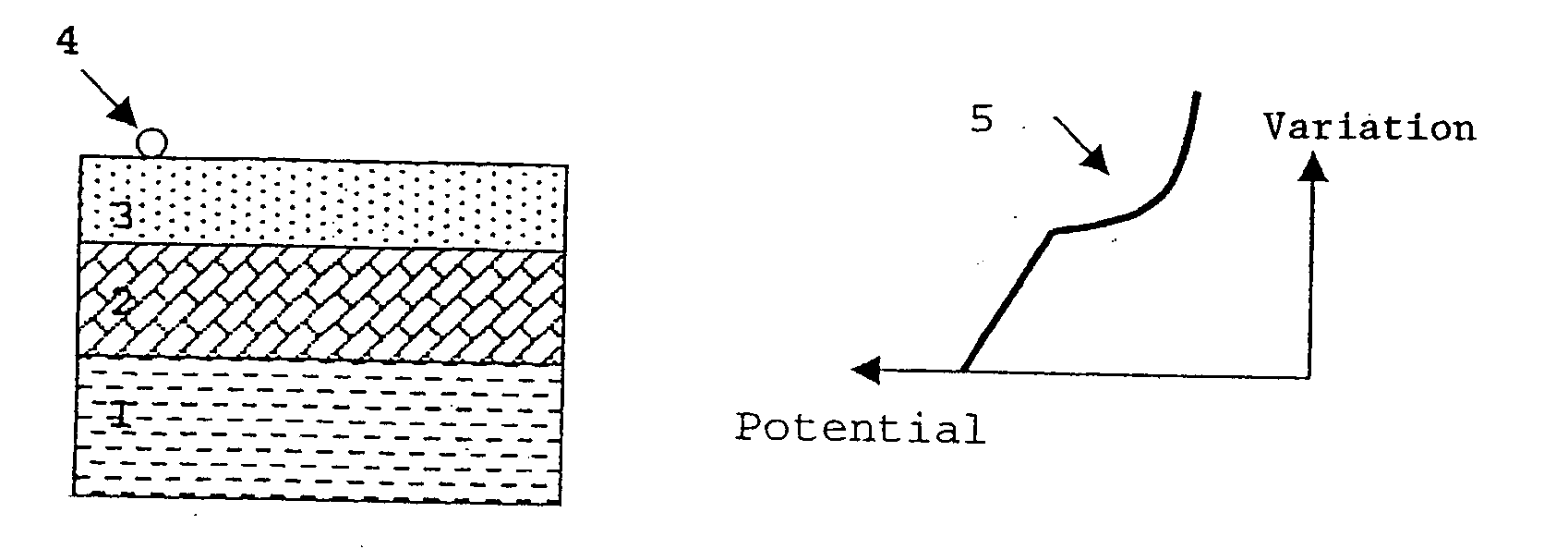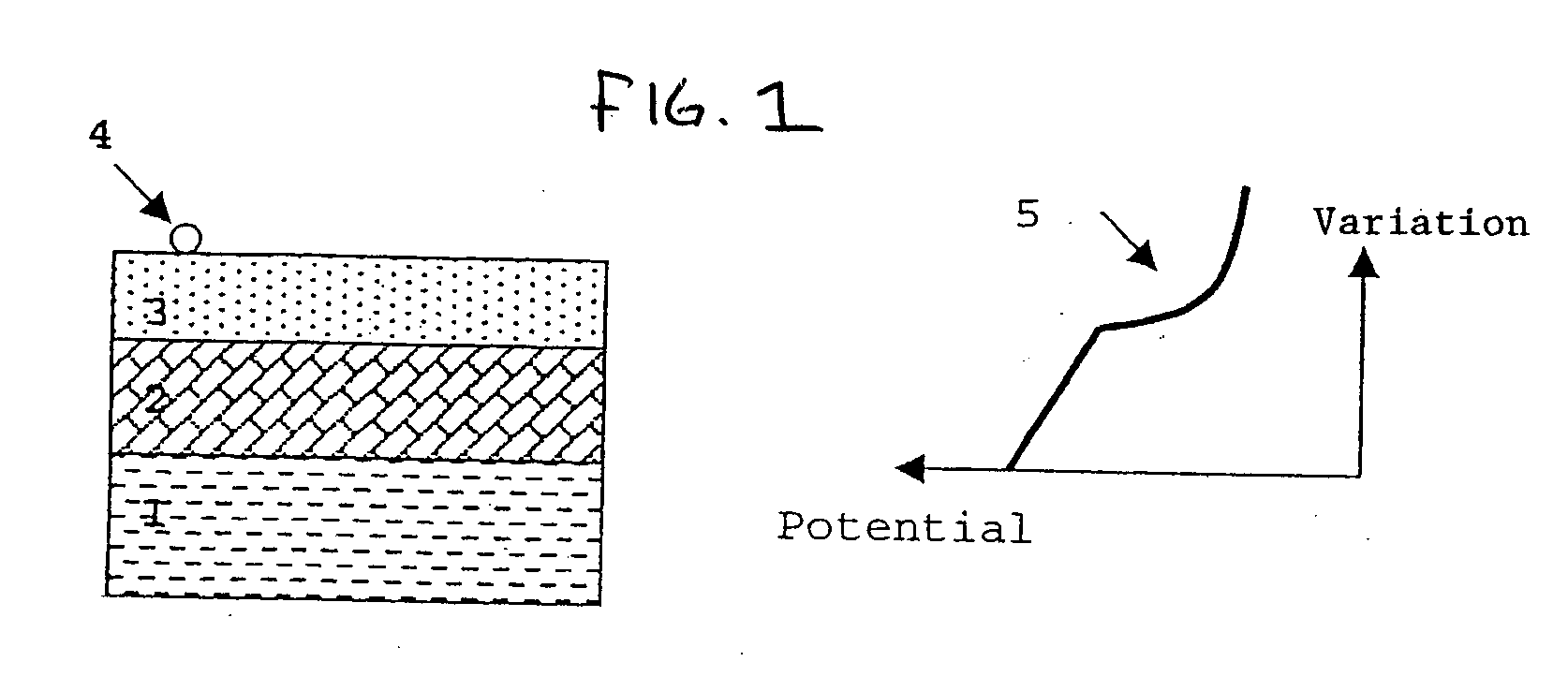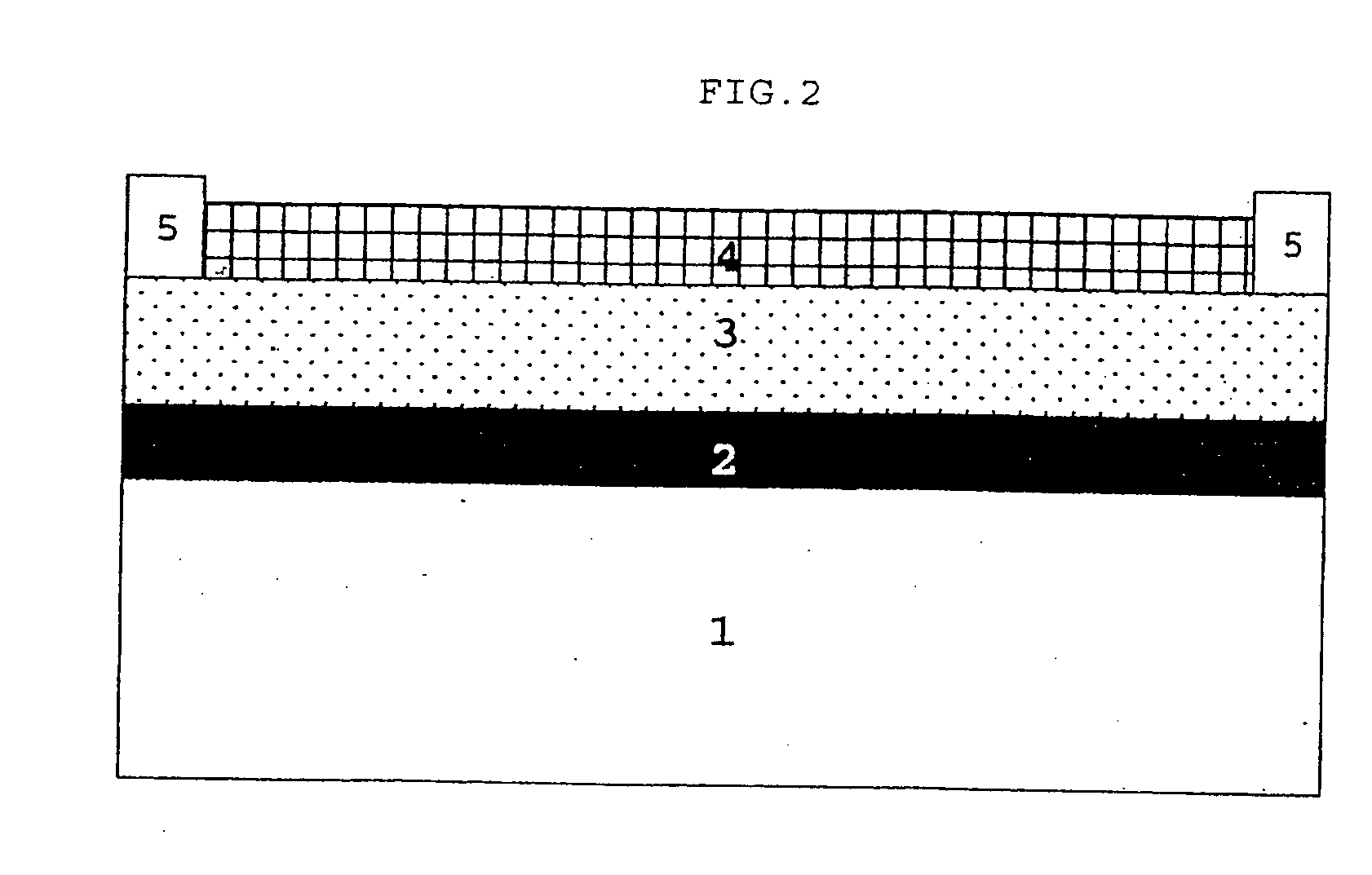Micro-structured gas sensor with control of gas sensitive properties by application of an electric field
a gas sensor and microstructure technology, applied in the field of gas sensors, can solve the problem that the design does not take into account the planar manufacturing method of conventional semiconductor fabrication, and achieve the effect of gaining selectivity
- Summary
- Abstract
- Description
- Claims
- Application Information
AI Technical Summary
Benefits of technology
Problems solved by technology
Method used
Image
Examples
Embodiment Construction
[0041] Referring to FIG. 1, a gas sensor includes an electrode 1 disposed under a gas-sensitive semiconductor film 3 with an insulator layer 2 in between. The aforementioned electroadsorptive effect may occur when the thickness of the gas-sensitive semiconductor film 3 is on the order of the Debye length LD. In this way the surface absorption of gas molecules 4 can be controlled through an electric field. Further, the insulator layer 2 may be low in defects because these defects can substantially shorten the Debye length of the insulator layer 2 and thus interfere with penetration of the field to the gas-sensitive film 3. Examples of Debye lengths for SnO2 are 60-80 nm where for insulators these lengths may be in the range below several micrometers.
[0042] Referring to FIG. 2, the gas sensor includes a semiconductor substrate 1 on which is disposed a gas-sensitive film 4 with a thickness of for example 59 nm. The gas-sensitive film 4 may be contacted by two electrodes 5. The gas-sen...
PUM
 Login to View More
Login to View More Abstract
Description
Claims
Application Information
 Login to View More
Login to View More - R&D
- Intellectual Property
- Life Sciences
- Materials
- Tech Scout
- Unparalleled Data Quality
- Higher Quality Content
- 60% Fewer Hallucinations
Browse by: Latest US Patents, China's latest patents, Technical Efficacy Thesaurus, Application Domain, Technology Topic, Popular Technical Reports.
© 2025 PatSnap. All rights reserved.Legal|Privacy policy|Modern Slavery Act Transparency Statement|Sitemap|About US| Contact US: help@patsnap.com



